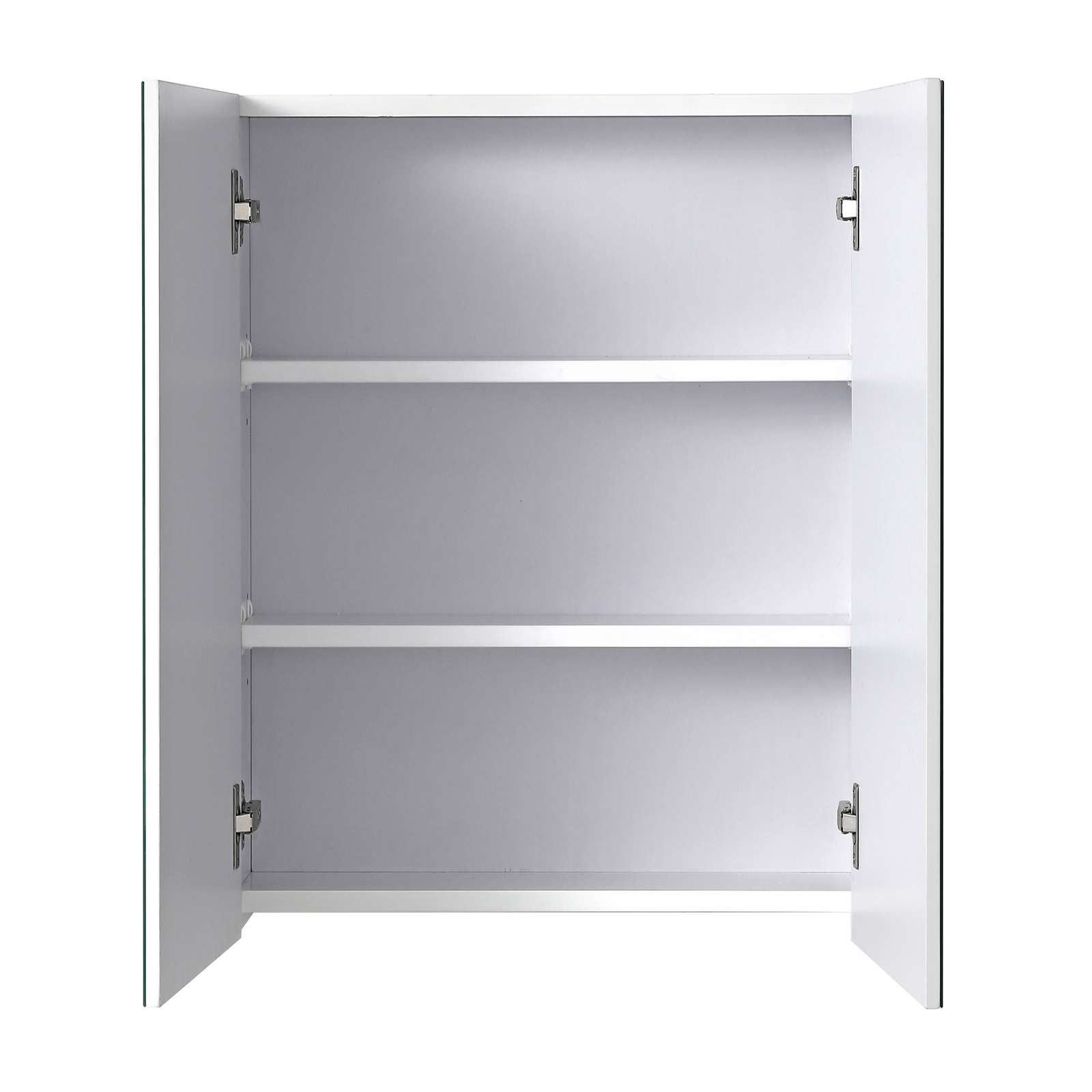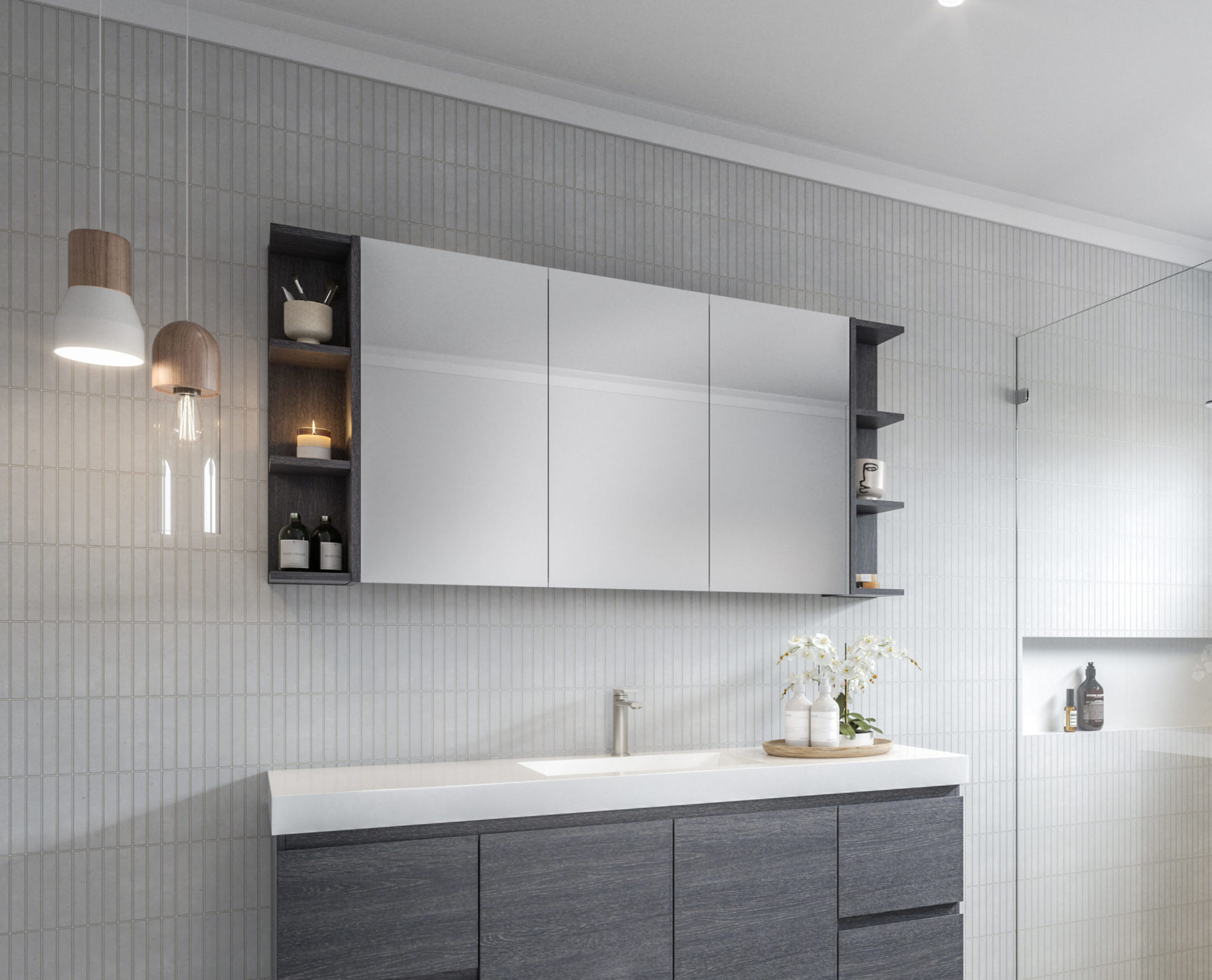Bathroom Shaving Cabinets

A bathroom shaving cabinet is an essential addition to any bathroom, providing valuable storage space for toiletries, grooming products, and other bathroom essentials. Bunnings offers a wide selection of shaving cabinets in various styles and designs, catering to different bathroom sizes and aesthetic preferences.
Types of Bathroom Shaving Cabinets
The choice of bathroom shaving cabinet depends on your specific needs and the available space in your bathroom. Bunnings offers three primary types of shaving cabinets: wall-mounted, freestanding, and mirrored cabinets.
- Wall-mounted shaving cabinets are ideal for smaller bathrooms as they do not take up any floor space. They are typically mounted above the sink, providing convenient access to toiletries. Wall-mounted cabinets are available in various sizes and styles, including single-door, double-door, and even cabinets with integrated mirrors.
- Freestanding shaving cabinets offer more storage space than wall-mounted cabinets and can be placed anywhere in the bathroom. They are ideal for larger bathrooms or those with limited wall space. Freestanding cabinets come in various designs, including cabinets with open shelves, drawers, and even built-in lighting.
- Mirrored shaving cabinets combine storage space with a large mirror, making them a practical and stylish addition to any bathroom. Mirrored cabinets are available in various sizes and designs, including cabinets with integrated lighting and shelves for storing toiletries.
Materials Used in Construction
Bathroom shaving cabinets are typically constructed using a combination of materials, each offering unique advantages and disadvantages.
- Timber is a popular choice for shaving cabinets, offering a classic and elegant look. Timber cabinets are durable and can withstand moisture, but they require regular maintenance to prevent warping or cracking. Examples of commonly used timber include oak, maple, and cherry.
- Metal, particularly stainless steel, is another popular choice for shaving cabinets. Metal cabinets are known for their durability, resistance to moisture, and easy maintenance. They also offer a modern and sleek look. Aluminum is another metal option, known for its lightweight and corrosion-resistant properties.
- Glass is often used for the doors and shelves of shaving cabinets, offering a sleek and modern look. Glass is also easy to clean and maintain. However, glass can be prone to scratches and breakage. Tempered glass is often used in shaving cabinets, as it is stronger and more resistant to breakage than regular glass.
Choosing the Right Bathroom Shaving Cabinet

A bathroom shaving cabinet is a practical and stylish addition to any bathroom, offering ample storage for toiletries and other essentials. Selecting the right cabinet involves careful consideration of various factors to ensure it complements your bathroom’s design and meets your specific needs.
Key Factors to Consider
Choosing the right bathroom shaving cabinet involves considering various factors to ensure it suits your bathroom’s design and meets your specific needs. Here are some key factors to consider:
| Factor | Description |
|---|---|
| Size | Consider the available space in your bathroom and choose a cabinet that fits comfortably without overcrowding the area. Measure the width, depth, and height of the space you have allocated for the cabinet. |
| Storage Capacity | Assess your storage requirements and select a cabinet with sufficient shelves, drawers, and compartments to accommodate your toiletries, medications, and other essentials. Consider the number of people using the bathroom and their individual needs. |
| Style | Choose a cabinet that complements your bathroom’s existing décor and style. Consider modern, traditional, minimalist, or other styles that align with your preferences. |
| Budget | Set a budget for the cabinet and explore options within your price range. Consider the quality of materials, features, and brand reputation when making your decision. |
Bathroom Shaving Cabinet Examples from Bunnings, Bathroom shaving cabinet bunnings
Bunnings offers a wide range of bathroom shaving cabinets to suit different bathroom styles and preferences. Here are some examples:
* Modern: For a sleek and contemporary look, consider the [Cabinet Name], featuring a minimalist design with sleek lines and a mirror. This cabinet offers ample storage space with adjustable shelves and drawers, making it ideal for organizing toiletries and other essentials.
* Traditional: For a classic and elegant bathroom, the [Cabinet Name] is a perfect choice. This cabinet features intricate details, a traditional design, and a spacious interior with multiple shelves and drawers. It can add a touch of sophistication to any bathroom.
* Minimalist: For a clean and uncluttered bathroom, the [Cabinet Name] is a great option. This cabinet boasts a simple design with a focus on functionality and storage. It features a spacious interior with shelves and drawers for organizing toiletries and other essentials.
Integrating the Shaving Cabinet with Existing Décor
It’s crucial to consider the existing bathroom fixtures and décor when choosing a shaving cabinet. The cabinet should complement the overall design and create a cohesive and aesthetically pleasing look.
* Color: Choose a cabinet color that complements the existing bathroom tiles, walls, and fixtures. Consider using neutral colors like white, black, or gray to create a timeless and versatile look.
* Materials: Opt for materials that align with the existing bathroom fixtures. For example, if your bathroom features chrome fixtures, choose a cabinet with chrome accents or a similar metallic finish.
* Style: Ensure the cabinet’s style complements the overall bathroom design. For example, if your bathroom features a modern design, choose a cabinet with sleek lines and minimalist details.
“A well-chosen bathroom shaving cabinet can enhance the functionality and aesthetics of your bathroom, creating a more organized and visually appealing space.”
Installing a Bathroom Shaving Cabinet: Bathroom Shaving Cabinet Bunnings
Installing a bathroom shaving cabinet can be a rewarding DIY project, adding both functionality and style to your bathroom. It’s a relatively straightforward process, but it’s essential to follow the proper steps to ensure a secure and successful installation.
Tools Required
Before you begin, gather the necessary tools for the job. These typically include:
- A stud finder to locate wall studs for support
- A drill with appropriate drill bits for pilot holes and securing the cabinet
- A level to ensure the cabinet is properly aligned
- A tape measure for accurate measurements
- A pencil for marking the installation points
- A screwdriver or drill driver for fastening screws
- A safety glasses to protect your eyes from debris
- A ladder for reaching higher areas
Safety Precautions
Safety is paramount during any DIY project.
- Always wear safety glasses to protect your eyes from debris.
- Ensure the area around the installation site is clear of obstructions and distractions.
- Use a sturdy ladder to reach higher areas and ensure it’s securely positioned on a stable surface.
- When drilling, use caution and apply pressure gradually to avoid damaging the wall or cabinet.
Common Installation Challenges
While installing a bathroom shaving cabinet is generally straightforward, you might encounter a few common challenges.
- Finding wall studs: Wall studs provide essential support for the cabinet. Use a stud finder to locate them accurately before drilling.
- Aligning the cabinet: Use a level to ensure the cabinet is perfectly horizontal and plumb. A misaligned cabinet can look uneven and may not be stable.
- Wiring and plumbing: Consider the location of electrical outlets and plumbing fixtures when choosing the cabinet’s position. You might need to adjust the installation plan or consult an electrician or plumber if necessary.
Step-by-Step Installation Process
Here’s a detailed guide for installing a wall-mounted bathroom shaving cabinet:
- Determine the installation location: Choose a suitable location, considering factors like available space, proximity to electrical outlets, and existing plumbing.
- Locate wall studs: Use a stud finder to locate wall studs in the chosen area. Wall studs provide structural support and are crucial for securing the cabinet.
- Mark the installation points: Use a pencil to mark the points on the wall where the cabinet will be mounted. Use a level to ensure the markings are horizontal and plumb.
- Drill pilot holes: Drill pilot holes at the marked points using an appropriate drill bit. Pilot holes make it easier to drive screws into the wall.
- Attach the cabinet: Align the cabinet with the marked points and use a screwdriver or drill driver to fasten the cabinet to the wall using the provided screws. Ensure the cabinet is secure and stable.
- Install the shelf: If your cabinet includes a shelf, follow the manufacturer’s instructions for attaching it to the cabinet. Ensure the shelf is securely mounted and level.
- Install the mirror: If your cabinet has a mirror, follow the manufacturer’s instructions for installing it. Ensure the mirror is securely mounted and aligned with the cabinet.
- Connect electrical wiring: If your cabinet has an electrical outlet, consult an electrician for wiring and installation.
- Connect plumbing fixtures: If your cabinet has a plumbing fixture, consult a plumber for installation.
Tips and Tricks
- Pre-drill holes: Pre-drilling holes before driving screws can help prevent the wall from splitting and ensure a smooth installation.
- Use a level: A level is essential for ensuring the cabinet is properly aligned and plumb. A misaligned cabinet can look uneven and may not be stable.
- Use shims: If the wall is uneven, use shims to level the cabinet before securing it. Shims can be made of wood, plastic, or metal.
- Use a stud finder: A stud finder is a valuable tool for locating wall studs, ensuring the cabinet is securely attached.
- Check the weight limit: Before installing the cabinet, check the manufacturer’s weight limit to ensure it can support the weight of your items.
- Clean the area: Clean the area around the installation site before installing the cabinet. This will help prevent dust and debris from getting inside the cabinet.

